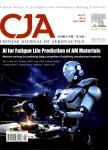Kinetic Monte Carlo Simulation of EB-PVD Film:Effects of Substrate Temperature
Kinetic Monte Carlo Simulation of EB-PVD Film:Effects of Substrate Temperature作者机构:Electromechanics and Materials Engineering College Dalian Maritime University Dalian 116026 China Center for Composite Materials Harbin Institute of Technology Harbin 150001 China ChengDu Aircraft Design & Research Institute Chengdu 610041 China
出 版 物:《Chinese Journal of Aeronautics》 (中国航空学报(英文版))
年 卷 期:2006年第19卷第B12期
页 面:86-90页
核心收录:
学科分类:080503[工学-材料加工工程] 08[工学] 0805[工学-材料科学与工程(可授工学、理学学位)]
基 金:Hi-tech Research and Development Program of China (2002AA763020) National Natural Science Foundation of China (50304007) Fund of Beforehand Research of National Defense (51418040304HT0114) New Century Excellent Talents in University 2004
主 题:substrate temperature film kinetic Monte Carlo EB-PVD
摘 要:The 2D kinetic Monte Carlo (KMC) simulation was used to study the effects of different substrate temperatures on the microstructure of Ni-Cr films in the process of deposition by the electron beam physical vapor deposition (EB-PVD). In the KMC model, substrate was assumed to be a "surface" of tight-packed rows, and the simulation includes two phenomena: adatom-surface collision and adatom diffusion. While the interaction between atoms was described by the embedded atom method, the jumping energy was calculated by the molecular static (MS) calculation. The initial location of the adatom was defined by the Momentum Scheme. The results reveal that there exists a critical substrate temperature which means that the lowest packing density and the highest surface roughness structure will be achieved when the temperature is lower than the smaller critical value, while the roughness of both surfaces and the void contents keep decreasing with the substrate temperature increasing until it reaches the higher critical value. The results also indicate that the critical substrate temperature rises as the deposition rate increases.



